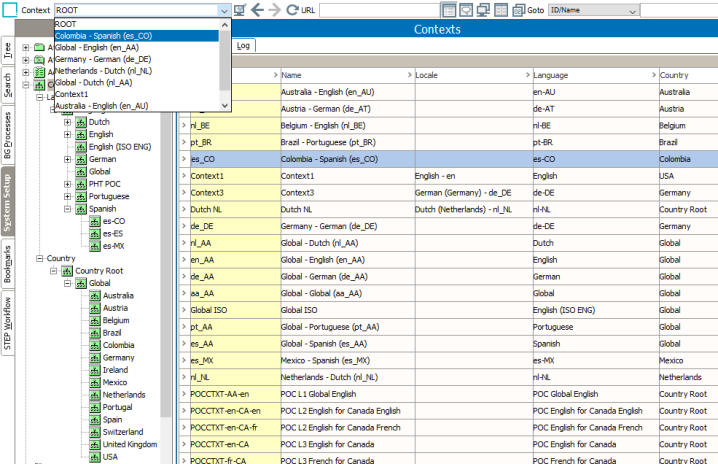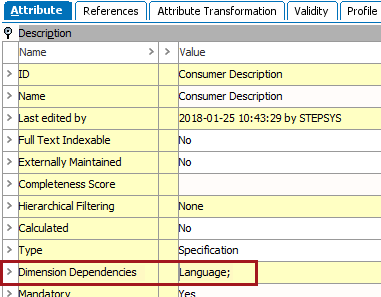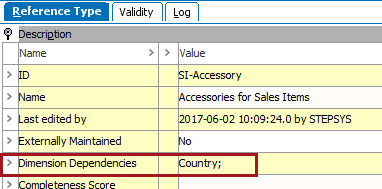This is one of the data gathering methodologies and recommendations for base setup improvement. The full list is defined in the Base Setup Recommendations topic here.
Note: These recommendations are valid for systems without In-Memory. The performance costs are different with In-Memory. For more information, refer to the In-Memory Database Component for STEP section of the Resource Materials in online help here.
The setup of contexts and dimensions is flexible and is often designed and configured based on business requirements. Ideally, the setup of contexts and dimensions should be based on avoiding unnecessary complexity and optimal performance as well, since a complex setup can have a negative impact on general performance.
Usually, in multilingual setups, two dimension points are defined by:
- Country
- Language
For this example, every object (both entities and products) can have a country and a language dimension:
- The country dimension allows differences in countries, such as different accessories of the product in different countries via suppressing a reference.
- The language dimension allows translations in different languages where the same object has an English, German, Spanish, etc., translation of the data.
The context defines the combination between the defined dimension points.
For example, the context Colombia - Spanish (es_CO) is defined with:
- Country = Colombia for Colombia (es-CO)
- Language = Spanish for Columbia (es-CO)

Important: The dimensions allow setup in a hierarchy using inheritance. This means that the dimension point inherits the data from its parent unless it has its own data. For example, the language 'Spanish for Colombia (es-CO)' is setup below the language 'Spanish (es).' This means that all data in the language 'Spanish for Colombia (es-CO)' is inherited from the language 'Spanish (es)' until local data in the language 'Spanish for Colombia (es-CO)' is set.
Once the dimensions and contexts are configured, then attributes, references, etc., can be configured to be dimension dependent.
For example, an attribute 'Consumer Description' can be configured to be language dependent.

And a reference such as 'Accessory' can be configured to be country dependent.

Recommendations
The following scenarios should be considered when determining the necessary dimension points for the system:
- Setting more than one dimension on an object can result in a complex situation and should be avoided. For instance, if a metadata attribute for an asset is defined to be language and country dependent, then it is possible to have a translated metadata attribute on the asset in different languages, and have a different metadata attribute value for different countries. It is hard to predict values when making an attribute multi-dimensional, such as when the metadata attribute inherits the values from its parents (e.g., from language Spanish and from country Global).
- Only define two dimensions (e.g., language and country) and only configure dimension dependency when required. For example, if the objects do not differ much in the countries, then only define a language dimension.
The more dimensions defined, the more complex the solution will be. A complex dimension setup requires more extensive processing in imports, exports, bulk updates, running business rules, etc.
The number of dimension points (e.g., number of languages) is of less importance, as well as the number of contexts.
For more information, refer to the Dimensions, Dimension Points, and Contexts topic in the System Setup documentation here.